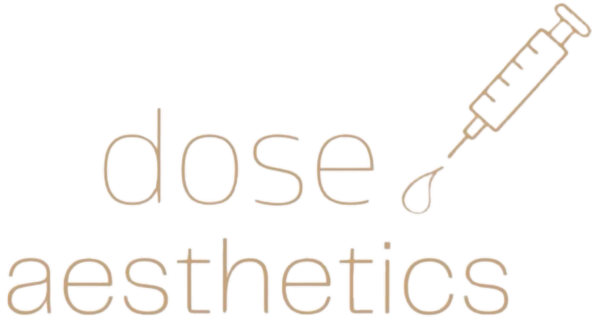Is your skin looking dull, uneven, or plagued with acne scars and fine lines? If you’re exploring ways to rejuvenate your complexion, you may have stumbled upon a popular skincare solution: chemical peels. But are chemical peels good for your face, or are they just another fleeting beauty trend?
In this comprehensive guide, we’ll dive deep into the world of chemical peels explaining how they work, what skin concerns they address, and whether they truly live up to the hype. We’ll also introduce you to Dose Aesthetics, a trusted provider of chemical peel treatments in Bowling Green, to help you make an informed decision about your skincare.
What Is a Chemical Peel?
A chemical peel is a skin-resurfacing procedure in which a chemical solution is applied to the skin to remove the top layers. Over time, the skin peels off, revealing a smoother, more youthful layer underneath. Depending on your skin’s needs, chemical peels can be light, medium, or deep.
- Light Peels: Treat superficial skin issues like minor discoloration and rough texture.
- Medium Peels: Penetrate the middle layers of skin to treat wrinkles, acne scars, and pigmentation.
- Deep Peels: Reach the lower dermal layers to tackle more severe skin concerns like deep wrinkles and precancerous growths.
Chemical peels are versatile and customizable, making them a go-to treatment in aesthetic clinics like Dose Aesthetics.
How Chemical Peels Work
Chemical peels work by exfoliating the skin chemically rather than mechanically. Common peeling agents include:
- Alpha Hydroxy Acids (AHAs) – Like glycolic acid and lactic acid for light peels.
- Beta Hydroxy Acids (BHAs) – Such as salicylic acid, effective for acne-prone skin.
- Trichloroacetic Acid (TCA) – Used for medium peels.
- Phenol – A powerful agent used in deep peels.
The chemicals break down the bonds between skin cells, allowing the outermost layers to shed naturally. This process stimulates new skin cell growth, boosts collagen production, and improves overall skin tone and texture.
Benefits of Chemical Peels for Your Face
So, are chemical peels good for your face? The short answer is yes—when done correctly and tailored to your skin type. Here are some of the transformative benefits:
- Improved Skin Texture: Say goodbye to rough, flaky skin.
- Even Skin Tone: Reduces hyperpigmentation, sunspots, and melasma.
- Fewer Fine Lines and Wrinkles: Especially around the eyes and mouth.
- Acne and Scar Reduction: Helps manage active acne and diminish acne scars.
- Boosted Radiance: Unveils a fresh, glowing complexion.
Patients at Dose Aesthetics in Bowling Green often report significant improvements in skin clarity and smoothness after just one session.
Are Chemical Peels Safe for All Skin Types?
Chemical peels can be safe for most skin types, but they aren’t a one-size-fits-all treatment. Factors such as skin tone, sensitivity, and existing skin conditions must be considered. Here’s what you should know:
- Fair to Medium Skin Tones: Typically tolerate all types of chemical peels well.
- Darker Skin Tones: Must proceed with caution, as deeper peels may cause hyperpigmentation or scarring if not properly administered.
A consultation with a qualified provider like Dose Aesthetics is essential to determine the best peel for your skin type and goals.
Recovery and Aftercare
Recovery time depends on the depth of the peel:
- Light Peel: Minimal downtime; mild redness and peeling for a few days.
- Medium Peel: Redness, swelling, and peeling for up to a week.
- Deep Peel: Requires significant recovery—up to two weeks or more.
Post-Peel Tips:
- Avoid sun exposure and wear broad-spectrum SPF.
- Keep your skin moisturized.
- Do not pick or peel flaking skin.
- Use gentle skincare products as recommended.
Dose Aesthetics provides clients with a detailed aftercare plan to enhance results and minimize side effects.
Why Choose Dose Aesthetics in Bowling Green?
When it comes to your face, experience matters. Here’s why clients trust Dose Aesthetics for chemical peel treatments in Bowling Green:
- Certified Providers: Skilled professionals with extensive training.
- Customized Treatments: Tailored peels for your specific skin type and concerns.
- State-of-the-Art Facility: Clean, modern, and equipped with the latest in aesthetic technology.
- Patient-Centered Care: From consultation to aftercare, you’re supported every step of the way.
With glowing reviews and a loyal client base, Dose Aesthetics has become a go-to destination for chemical peels in Bowling Green.
Tips for Getting the Most Out of Your Chemical Peel
- Schedule Strategically: Avoid big events until your skin fully recovers.
- Stick to a Skincare Routine: Use products recommended by your aesthetician.
- Be Consistent: A series of treatments often yields the best results.
- Avoid Sun Exposure: Always wear SPF post-treatment.
- Hydrate: Drink plenty of water to support skin regeneration.
Are Chemical Peels Good for Your Face?
Chemical peels offer a powerful, science-backed solution for many common skin issues. Whether you’re battling acne scars, sun damage, or fine lines, this treatment can help you achieve a smoother, more radiant complexion. When performed by experienced professionals like the team at Dose Aesthetics in Bowling Green chemical peels are both safe and effective.
So, are chemical peels good for your face? Absolutely—when customized to your unique skin and administered by a trusted provider. Schedule a consultation today!
frequently asked questions
1. How often should I get a chemical peel?
Most light peels can be done every 4–6 weeks, while medium peels are typically spaced every 3–6 months. Deep peels are generally done once in a lifetime.
2. Can I wear makeup after a chemical peel?
You should avoid wearing makeup for at least 24–48 hours post-treatment to allow your skin to heal.
3. Are chemical peels painful?
You may feel mild discomfort, such as tingling or warmth, during the procedure. Most people tolerate it well.
4. Is there an ideal age for chemical peels?
There’s no set age. People in their 20s through 60s seek chemical peels for various reasons, from acne to anti-aging.


